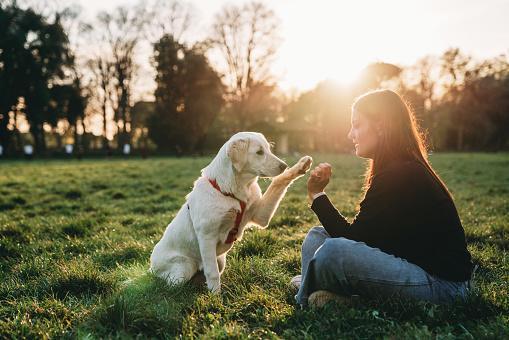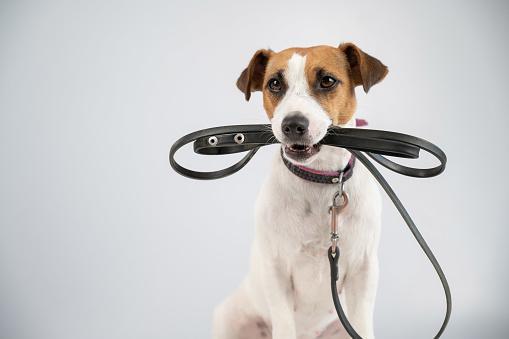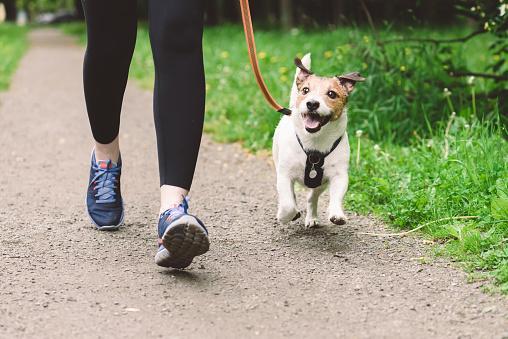How To Leash Train A Dog: 8 Ways to Train a Dog?
The ideal method for training a dog to go for walks on his leash is to get him used to carrying his collar and linked leash outside the home before gradually introducing him to going inside when you maintain the leash. Once they have placed the leash, add instructions like “come” or “wait.” Offer rewards immediately at the forefront as they follow you to help them learn to “heel.”
Consider taking them outdoors for practical practice if they are confident understanding basic commands off a leash and could “heel” without yanking on the leash. Please look closely at our detailed instructions to find out how to teach a dog to follow you on dog leashes.

Accessories Necessary to Leash Train A Puppy
The following step is to connect the string to your pet’s collar and let them pull it around your house briefly. Praise them again with goodies when they have become accustomed to the leash’s small weight.
This enables them to freely discover their environment while also assisting them in becoming accustomed to having something linked to them. Before you begin with dog leashes, make the following purchases to educate your puppy to walk on a leash properly:
- Collar or Harness: Collars and leashes come in a variety of styles. Choose a harness with a head halter, an adjustable collar, or a front-clip design. The harness has a rear fastening, should fit snugly, and the dog can enter it.
- Leash: The leash must not be extendable and be approximately 4–6 feet long.
- Train treats: To encourage excellent behavior, give your dog a little pleasure called an instructional reward. One of the finest strategies is positive behavior training.
- Reward Pouch: A treat pouch functions similarly to a fanny backpack for treats. A sandwich in a baggie might work too.
Choose the Correct Training Leash and Collar
You require an exercise leash that you employ alongside your usual leash. The ordinary leash connects to the harness, while the instructional leash attaches to the collar. Holistapet’s dog-walking solutions may provide what you are looking for.
With both dog leashes, you may walk your dog over a set range with the long leash while swiftly and effectively taking command with the shortest training leash. When purchasing collars and harnesses, others aim for items that fit comfortably yet snugly.

Primary Techniques for Teaching Older Dogs to Exercise on a Leash
You can teach your dog various ways to walk without a leash. In this post, we outline two popular techniques for teaching dogs to walk on dog leashes. There is also the more involved conventional leash training approach.
The second way, known as the “heel” method, necessitates that your dog be able to react to the cue to “heel.” You may choose the approach that is most suitable for both of you and the dog following reading about the two methods:
Calm Down Your Dog
Your dog will become enthusiastic when you attach the leash and harness. He undoubtedly already associates the leash and harness with strolling time, so he can get energetic and excited when the walking equipment is brought out. Even while it is adorable, this might make it challenging to handle your dog when out on a stroll.
Bring the dog to a secure outdoor area where he may run about and burn off a few calories while you begin your stroll. You can start the walk after his enthusiasm levels have calmed down.
Start Slowly and Expand More
Based on how your dog responds to the session, brief your initial leash strolling sessions. Allow your dog to unwind and attempt again on a different day if they appear uninterested. When your pet feels more at ease, you can stroll with a leash next to them.
You may progressively extend your walks’ duration and regularity. How your session goes will depend on your dog’s character, activity level, and general health.
Utilize A Brief Leash Until You Feel Comfortable
Puppies, and dogs, frequently want to go off on their adventures. Their security may be at risk because of this. A shorter leash will assist you in maintaining your dog closer to you and offer you more influence over your dog’s mobility, whereas an extended leash will allow your dog more room to walk.

In an emergency, you can find leashes with quick-restraint handles that give you a firmer grasp. To prevent pain for your dog, keep the grip short but not too tight.
Begin Your Stroll
Start your stroll. If your dog pulls you around immediately, halt, turn, and return to the cage. Repeat this as necessary until he understands not to drag you around.
Avoid Allowing Your Dog to Drag You Around
Your dog can begin to try to drag you about once again as the stroll goes on. If that happens, remaining still and waiting for your dog to calm down before moving and consistently halting when your dog tugs will take a lot of tolerance.
Tell the Instruction of “Heel.”
Give the instruction “heel” if your dog tugs you in a different direction while walking. As soon as you give this instruction, instantly slow down and give the leash a light tug. Await your dog’s return to your side.

Give Rewards
Offer your dog a reward and some praise as soon as he returns to your side. He will be far keener to heed the instruction if he begins to link it to coming back to you on occasion and getting a treat.
Be Persistent
It took time to build Rome. Establishing a rhythm and comprehension may take some time while strolling your dog-on-dog leashes. It might be time-consuming and irritating, but it is crucial to remember that our dogs can sense our emotions and energy. Your pets can interpret our nonverbal cues. Therefore, we must maintain composure and stick to our workout regimen.
Your canines’ ability to detect smell helps them learn about their surroundings. Allow your dog to explore as extensively as they would like when outside. Your puppies may exercise their wits while discovering their surroundings through sniffing.
Conclusion
There are several ways to new and old dog leashes training. Irrespective of the approach you decide is best for you and your dog, remember that practice creates perfect. You will need a lot of diligence and time to teach your dog & Holistapet’s dog leash is a must for the same. Do not be sparing with praises and goodies; encouraging behavior is the most unusual approach to motivate your dog to engage in the actions you value.


